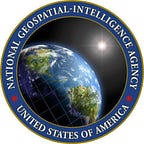Viewpoint: Strengthening the ‘Geo’ in GEOINT
By Lt. Col. Chris Oxendine and Col. (R) Steven Fleming
Editor’s Note: The views expressed in this article are those of the author and do not reflect the official policy or position of the National Geospatial- Intelligence Agency, the intelligence community, the Department of Defense or the United States Government.
Many discussions involving geospatial intelligence, or GEOINT, focus on the collection of geospatial data or tools that analyze geospatial data or, possibly, on systems that provide a medium for visualizing this information. In this light, geospatial intelligence provides decision makers with key information that shapes foreign policy and is used in conjunction with other intelligence sources to determine whether our nation sends its servicemen and women to war.
GEOINT is actually far more multi-dimensional.
Fundamentally, it is crucial that the foundation of GEOINT involves an in-depth understanding of both physical geography and human geography.
This understanding should drive how we develop GEOINT tools and methodologies that analyze and visualize spatial and temporal human-environmental interactions as well as how we train GEOINT professionals.
U.S. Code Title 10 § 467 defines GEOINT as the “exploitation and analysis of imagery and geospatial information to describe, assess, and visually depict physical features and geographically referenced activities on the earth. Geospatial intelligence consists of imagery, imagery intelligence, and
geospatial information.”
Before GEOINT officers can do this exploitation and analysis, however, they must first understand exactly what the ‘activities on the earth’ are. From this
standpoint, and in preparing students for service in the GEOINT community, it is imperative that GEOINT officers understand the physical, spatial, historical, cultural and political contexts of the regions where they are or will be supporting operations.
Medina and Hepner stated in their Winter 2015 Pathfinder article, “A Note on the State of Geography and Geospatial Intelligence Research,” that the “need for geographic knowledge is greater than ever and ignoring that need will eventually lead to extreme failures in policy.”
We agree. It is imperative that academic curriculums (both education and training) properly prepare students to evaluate and understand the geographic concepts of a region, while understanding bias that may be present in data they are analyzing.
We present a recommended solution to prepare geospatial information science graduates to face the world’s dynamic and varied environments. Students who major in GISc should be educated and/or trained on multiple fronts, providing them a solid foundation in understanding the impacts of both physical and human geography and how geospatial information systems and image analysis tools can be utilized to support decision making in complex environments.
Strengthening the ‘geo’ in ‘geospatial’ intelligence begins with an academic curriculum that has a solid foundation in geography.
This foundation provides students with an understanding of physical and human geography. The physical geography focus includes discussing the impacts of terrain, weather, water and vegetation on operations and intelligence. The human geography focus includes impacts of humans in different environments and, in turn, how the Earth affects human activity.
After establishing a baseline understanding of physical and human geography, academic programs can build upon these foundational experiences with enhanced understanding in geospatial information science,
imagery analysis and cultural geography. This provides an integrative experience that includes courses in both basic and advanced geospatial
information systems, cartography, basic and advanced remote sensing, photogrammetry, surveying and cultural geography. This integrative experience provides students with a thorough understanding of how to synthesize the aspects of physical and human geography within a geospatial information system.
The GEOINT community needs GIS professionals who are trained to analyze the physical, cultural and human aspects of a region while synthesizing this with information gathered from numerous sensors (e.g. satellites, mobile phones, social media, etc.). We believe that ensuring from the outset that ‘GEO is part of GEOINT’ is critical to the success of the students studying the discipline.
Army Lt. Col. Chris Oxendine, Ph.D., is an assistant professor in the Department of Geography and Environmental Engineering at the United States Military Academy. Contact him at christopher.oxendine@usma.edu
Retired Army Col. Steven Fleming, Ph.D., is a professor of Practice of Spatial Sciences in the Spatial Sciences Institute at the University of Southern California. Contact him at s.fleming@usc.edu
